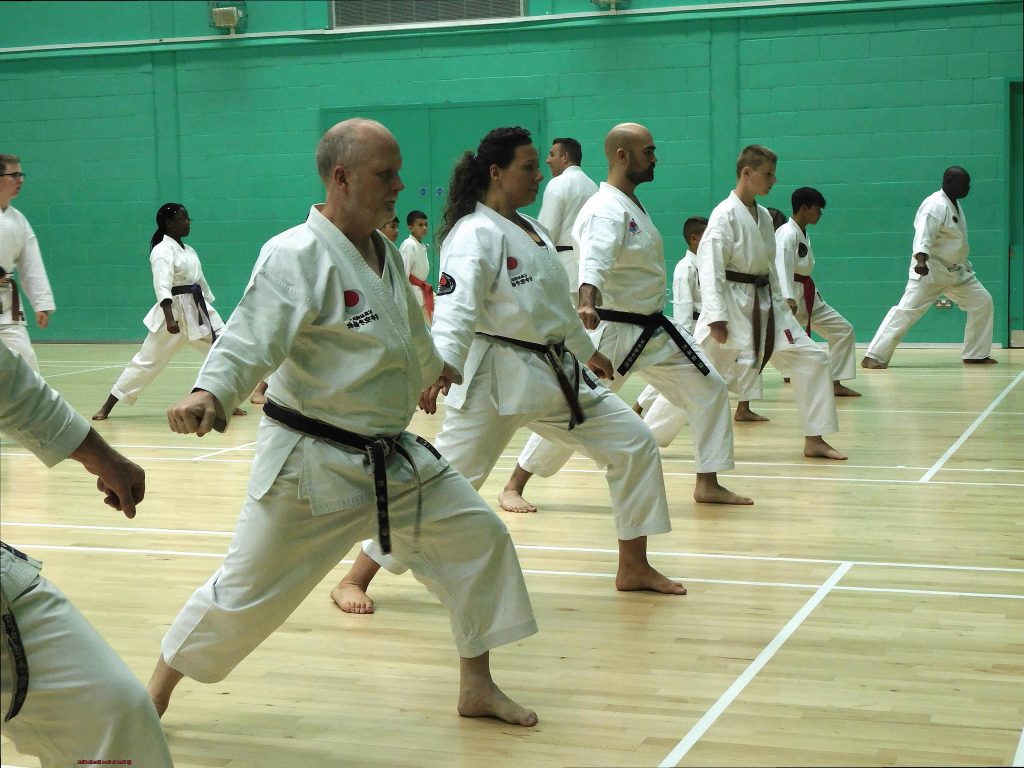Karate is a time-honored Japanese martial art that boasts an array of bone-crushing strikes.
However, when it comes to delivering a knockout blow, nothing quite compares to the impressive and awe-inspiring karate kick. Whether you’re a newbie or a seasoned practitioner looking to perfect your technique, mastering the art of the karate kick is an invaluable skill that can come in handy in all sorts of scenarios.
But how does one go about executing a karate kick? From footwork and timing to follow-through and execution, there are many critical factors to consider when performing this powerful maneuver.
Fear not – in this blog post, we’ll take you through everything you need to know about how to do a karate kick. We’ll provide you with step-by-step instructions and useful tips and tricks that will guide you through the process of mastering this crucial martial arts move.
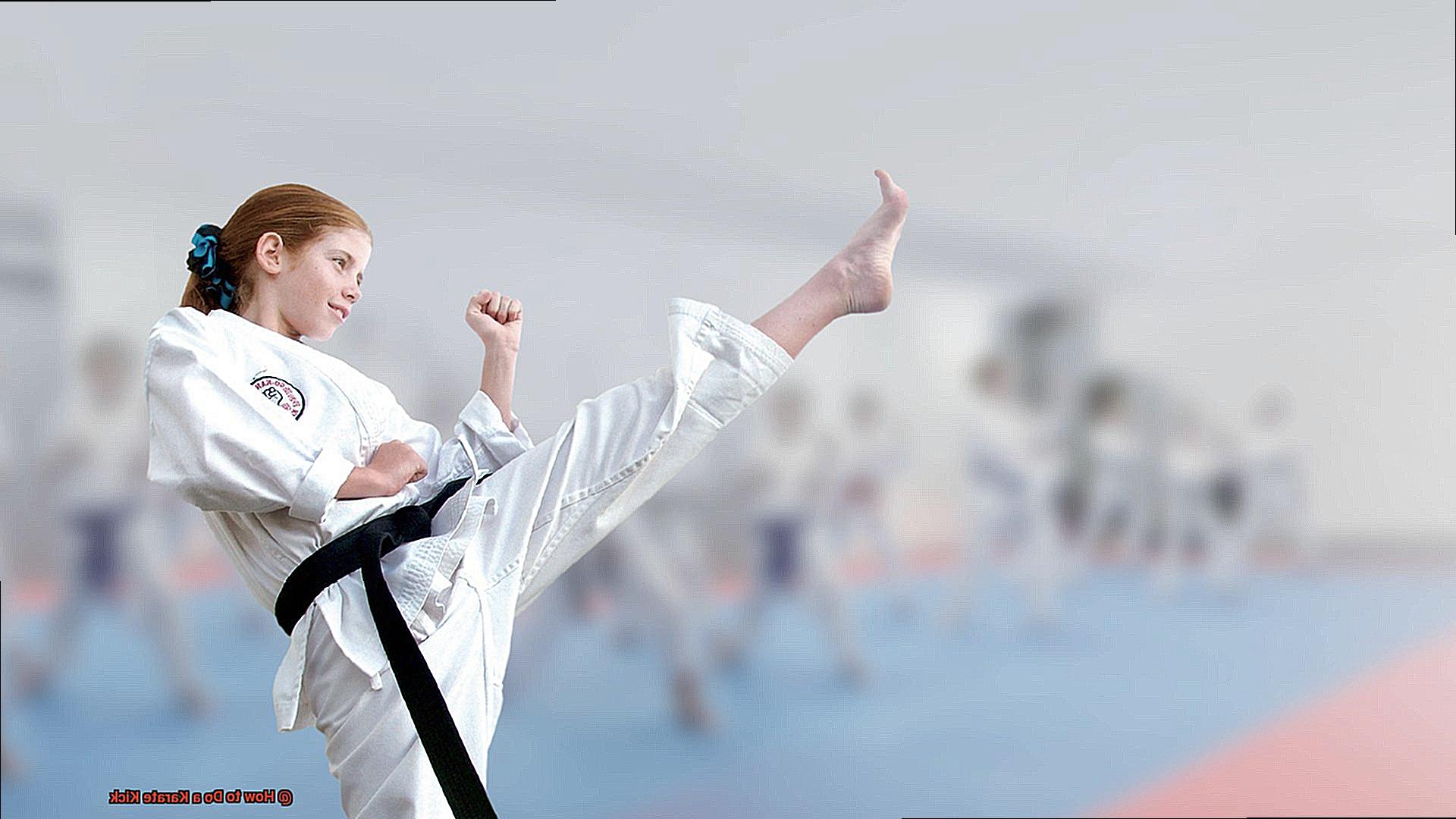
So, let’s suit up in our karategi and get ready to unleash some serious butt-kicking action.
What is a Karate Kick?
Karate, a martial art that originated in Okinawa, Japan, is renowned for its powerful strikes and kicks.
A karate kick is a technique where the leg is used to strike an opponent with varying degrees of force. These kicks involve the use of different parts of the foot, including the heel, ball, and instep, each having a specific purpose for different situations.
There are various types of karate kicks, with the front kick being one of the most common. This technique involves lifting the knee up towards the chest and extending the leg forward in a straight line while keeping it slightly bent at the knee.
The foot is then snapped out to make contact with the target, such as an imaginary opponent’s midsection or head. It is critical to keep the foot flexed throughout this movement to prevent injury.
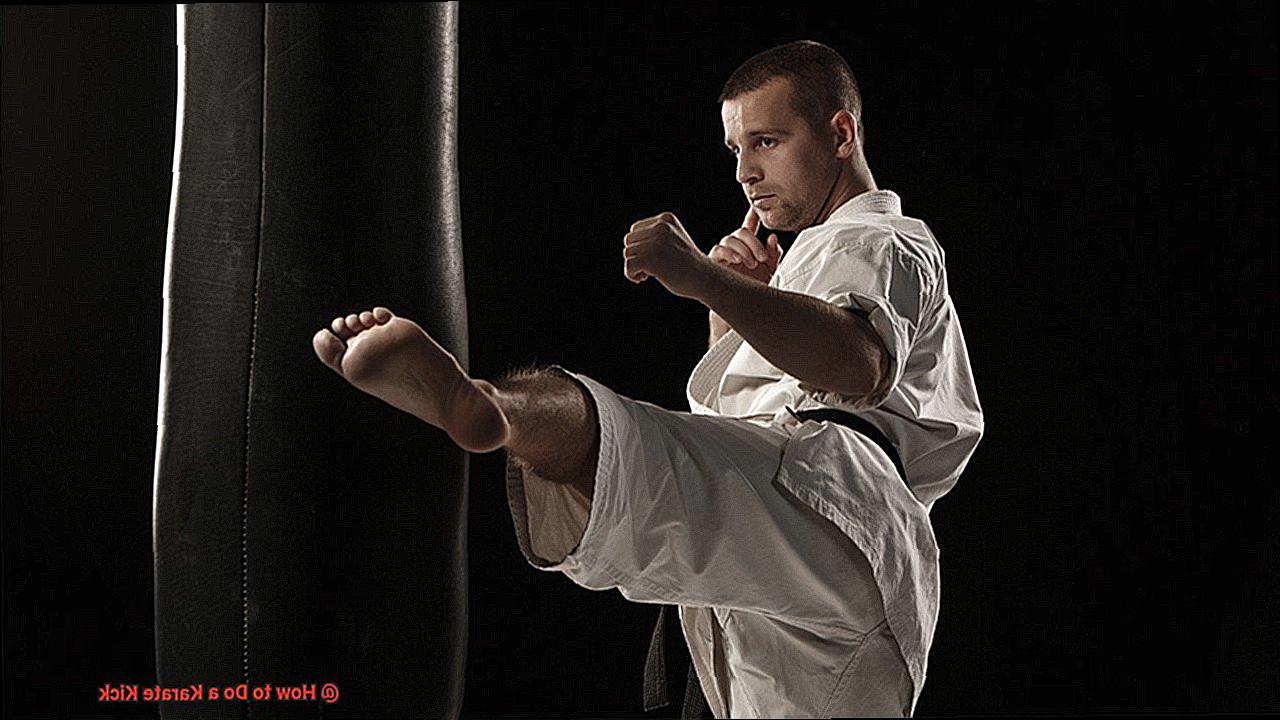
To execute karate kicks effectively, proper form, balance, and timing are essential. It takes years of training and practice to master these techniques.
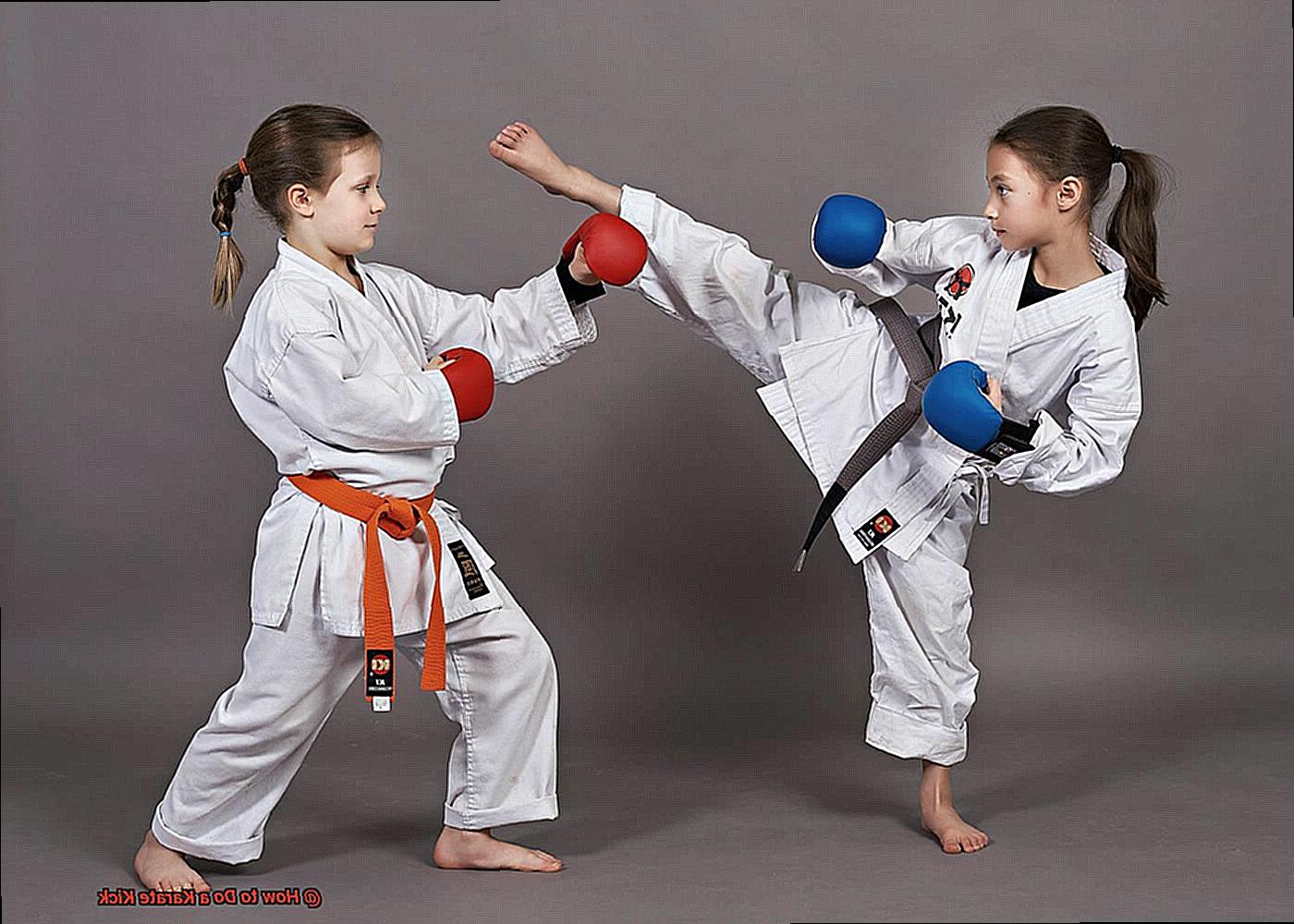
Karate practitioners must also have strong legs and flexibility to perform these kicks with precision. Karate kicks are not just limited to self-defense situations but are also used in competitions.
Karate tournaments often include sparring matches where competitors use kicks and punches to score points. In conclusion, a karate kick is a powerful technique that requires skill, strength, and discipline to master.
With regular practice and dedication, anyone can learn how to perform a karate kick correctly and effectively.
Always remember to warm up before training and wear proper attire for full range of motion.
Different Types of Karate Kicks
Karate is an art that demands a combination of determination, discipline, and skill to execute effectively.
One of the most vital components of karate is mastering various types of kicks. In this section, we will explore the five different types of karate kicks that you should know.
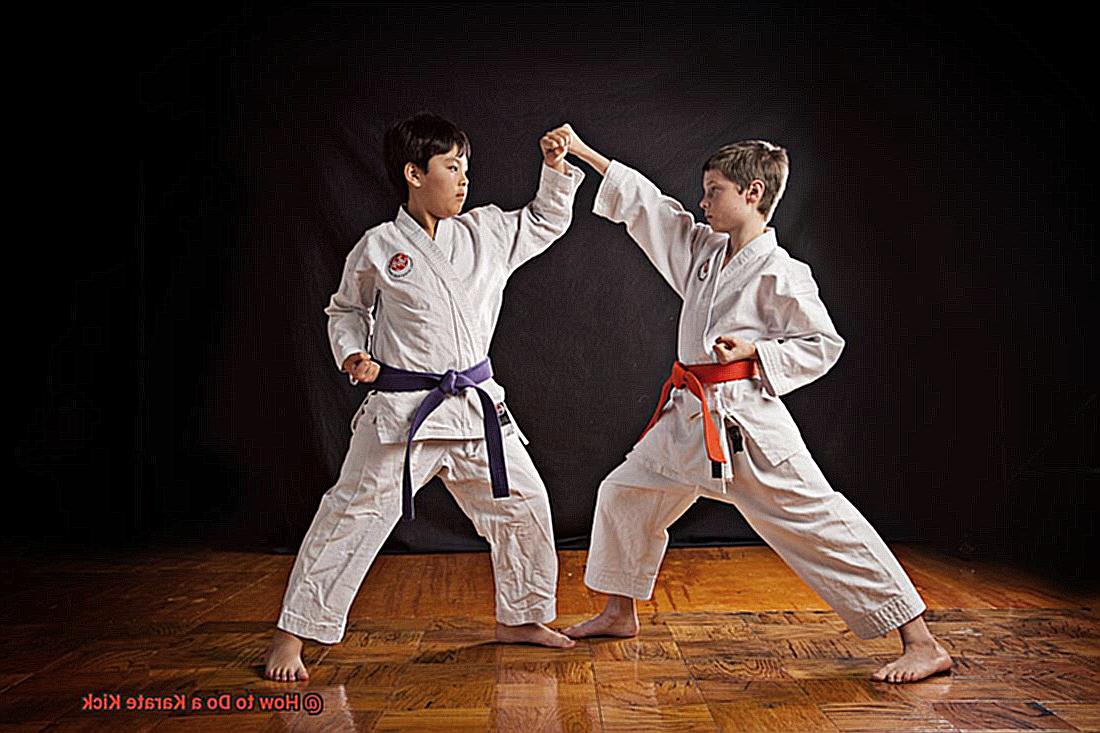
Starting with the front kick, it is a fundamental karate move that involves extending your foot forward in a linear motion. The front kick is a versatile kick that can be used as an attacking move to hit your opponent’s torso or head or as a defensive move to keep your opponent at bay.
The sidekick is another essential karate technique that involves lifting your knee and extending your leg sideways. This kick is perfect for striking an opponent’s midsection or ribs and can also be used as a defensive move to keep your opponent at a distance.
The roundhouse kick is a powerful karate move that involves pivoting on one foot and striking with the other leg in a circular motion. This kick has immense power and can be aimed at an opponent’s head or midsection, making it an excellent attack or defensive move.
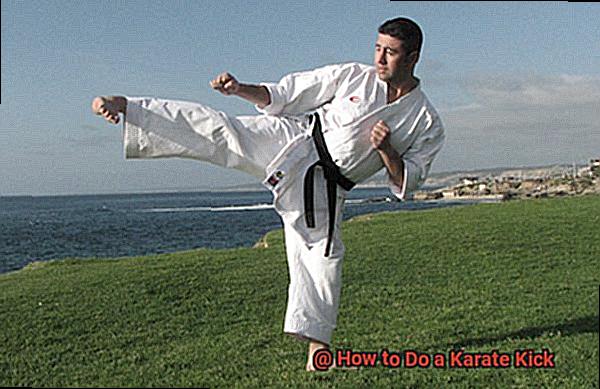
The back kick, executed by turning your back towards your opponent and kicking with your rear leg, is an effective close-range combat technique. It catches the opponent off guard and can also create distance between you and your opponent.
Lastly, there’s the axe kick, which is a high-risk, high-reward move that involves lifting your leg high above your head and bringing it down forcefully like an axe. This kick targets an opponent’s head or neck and can cause serious damage if executed correctly.
Benefits of Doing Karate Kicks
Karate kicks may be visually impressive, but they offer more than just aesthetics.
Practicing karate kicks can improve your physical fitness and mental wellness in various ways. Here are some of the benefits of doing karate kicks:
First, karate kicks enhance your overall flexibility and range of motion. The leg movements involved in practicing these kicks require a high degree of flexibility.
By persistently practicing karate kicks, you can improve your flexibility and achieve a greater range of motion. In addition to flexibility, karate kicks also improve balance and coordination skills.
These kicks require a great deal of balance and coordination, which can be beneficial in other areas of life. Regular practice can help build these skills and lead to better overall balance and coordination.
Another benefit of practicing karate kicks is building lower body strength. The muscles in your legs, hips, and glutes will get a workout while practicing these kicks, leading to stronger and more powerful legs.
Karate kicks can also boost your cardiovascular endurance as they require a lot of energy. By regularly practicing these kicks, you can increase stamina and endurance.
Lastly, practicing karate kicks improves mental focus and concentration skills. Karate kicks require a great deal of mental focus and concentration, which translates into other areas of life.
By practicing these kicks, you’ll improve your ability to concentrate. In conclusion, karate kicks offer numerous physical fitness and mental wellness benefits.
Steps to Execute a Basic Front Kick
The front kick might seem simple, but it requires proper technique and practice to unleash its power.
Here, we’ll guide you through five steps to execute a basic front kick in karate that will make you feel like a martial arts master.
Step 1: Start with the Correct Stance
Stand with your feet shoulder-width apart, toes pointing forward, and weight evenly distributed between both legs. This stance sets the foundation for your front kick and ensures stability throughout the movement.
Step 2: Lift Your Knee
Lift your knee towards your chest while keeping your foot flexed.
This motion generates more power when you kick and engages your core for better balance and control.
Step 3: Extend Your Leg
Extend your leg straight out in front of you, pointing your toes towards the target. Keep your foot parallel to the ground and maintain stability by engaging your core and upper body.
Step 4: Aim for the Target
To maximize impact and minimize injury risk, aim for the target with the ball of your foot.
Keep your leg straight as you make contact with the target, generating maximum force for a powerful front kick.
Step 5: Retract Your Leg
Retract your leg back to its starting position in a controlled manner, maintaining balance and stability throughout the movement.
With practice, this step will become second nature, allowing for quicker execution of multiple kicks.
Tips for Doing a Proper Karate Kick
Are you ready to take your karate skills to the next level? Executing a proper karate kick requires practice, precision, and power. But fear not, with these tips, you’ll be kicking like a pro in no time.
Find Your Balance: The Foundation of a Proper Karate Kick
Before you even attempt a karate kick, it’s important to find your balance. Start by standing with your feet shoulder-width apart, knees slightly bent, and weight evenly distributed between both feet. This will give you a solid foundation to work from and prevent you from losing your balance during the kick.
Chambering: The Secret to a Powerful and Precise Kick
Chambering is the key to generating more power and speed when executing a karate kick. This involves bringing your kicking leg up towards your chest while keeping your knee bent. As you chamber, engage your core muscles to help generate more power and stability.
Extend Your Leg for Maximum Effectiveness: The Importance of Proper Technique

When executing a karate kick, it’s important to fully extend your leg towards the target. Aim to hit the target with the ball of your foot while keeping your foot flexed. This will ensure that you’re using your entire leg, from hip to toe, to generate maximum impact. Proper technique is crucial for both power and precision.
Speed Over Strength: Why Quick Kicks are More Effective
In karate, speed is often more important than strength when it comes to executing kicks. A fast, snappy kick will typically be more effective than a slow, heavy one. Focus on quick kicks rather than trying to use brute force. This will also help prevent injury by reducing the strain on your joints and muscles.
Practice Makes Perfect: How to Improve Your Karate Kick Technique
As with any martial arts technique, practice makes perfect when it comes to karate kicks. Start with slow movements and gradually increase speed and power as you become more comfortable with the technique. It’s also helpful to practice in front of a mirror or with a partner who can give you feedback on your form and technique.
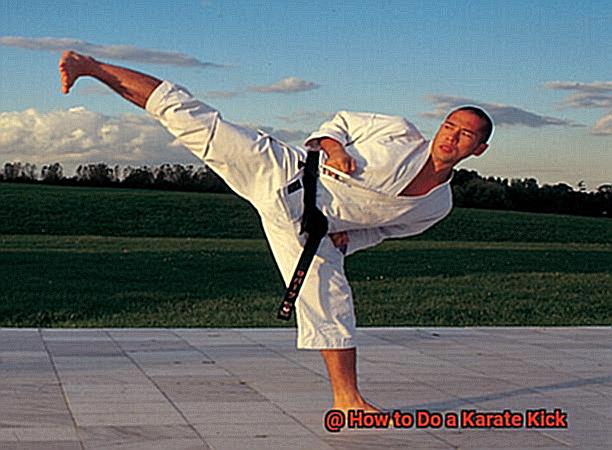
In conclusion, executing a proper karate kick requires a combination of balance, chambering, extension, speed, and practice. By following these tips and regularly practicing your technique, you’ll be able to kick with precision and power like a true martial artist.
Common Mistakes When Doing a Karate Kick
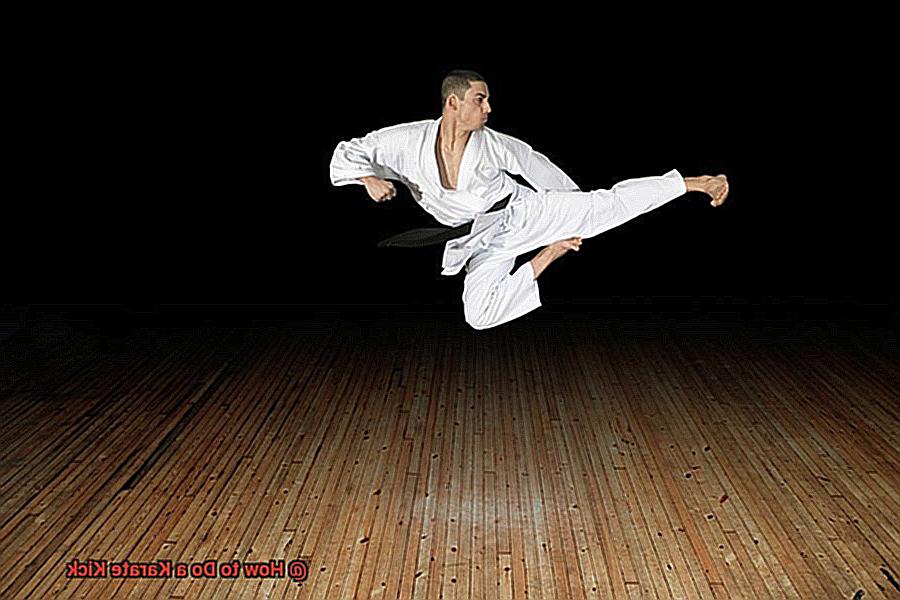
Karate is a martial art that requires precision, focus, and attention to detail.
Mastering the perfect kick is essential for any karate practitioner. Unfortunately, beginners often make common mistakes when executing a karate kick that can hinder their progress.
In this blog post, we will explore some of the most common mistakes beginners make when performing a karate kick and offer tips on how to avoid them. One of the biggest mistakes beginners make is not keeping their heel down.
When executing a karate kick, it’s crucial to keep the heel of the supporting foot firmly planted on the ground. Doing so provides stability and balance during the kick.
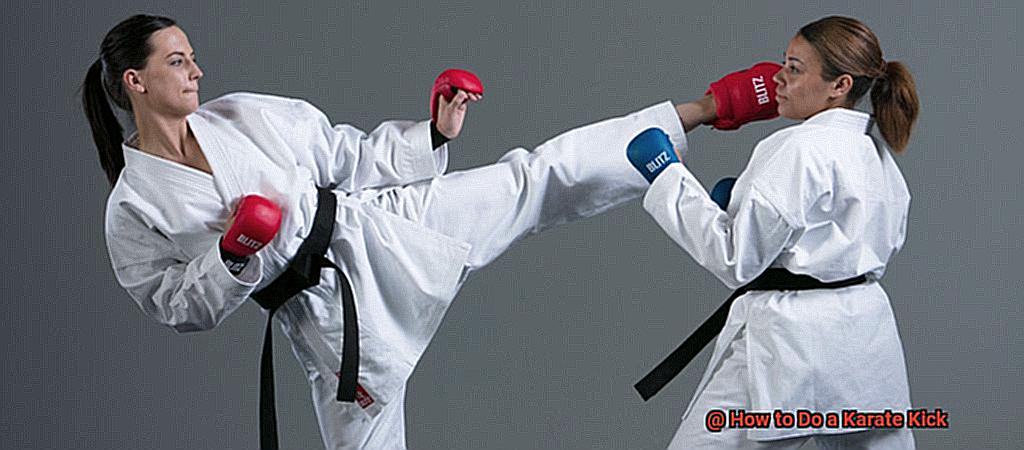
If the heel is lifted, it can cause loss of balance and make the kick less effective. To avoid this mistake, ensure that you keep your heel down throughout the entire kick.
Another common mistake beginners make is not rotating their hip properly. When executing a karate kick, rotating the hip towards the target maximizes power and force behind the kick.
Failing to rotate the hip can result in a weaker kick that doesn’t reach its full potential. To avoid this mistake, focus on rotating your hip towards your target as you perform your kick.
A third mistake beginners make is not keeping their knee in line with their foot. Keeping your knee in line with your foot is essential to prevent injury and ensure proper alignment during the kick.
Failure to do so puts unnecessary strain on your knee joint and can lead to injury over time. To avoid this mistake, pay close attention to your knee placement as you execute your kicks.
Lastly, beginners often neglect to follow through with their kicks after making contact with their target. Following through with your kicks maximizes effectiveness and ensures that you deliver maximum power to your target.
Failing to do so results in a weaker kick that doesn’t do as much damage as it could have. To avoid this mistake, focus on following through with your kicks even after they make contact with your target.
So, executing a karate kick can be challenging for beginners. However, by avoiding these common mistakes, you can improve your technique and become a more effective martial artist.
drmfJVgEBfU” >
Conclusion
In conclusion, mastering the art of karate kicks is no easy feat.
It requires practice, patience, and discipline to execute these powerful maneuvers with precision and force. But fear not – with dedication and hard work, anyone can learn to do a karate kick like a pro.
Karate kicks involve using different parts of the foot to strike an opponent with varying degrees of force. Proper form, balance, and timing are essential for executing these moves effectively.
By practicing five different types of kicks – front kick, sidekick, roundhouse kick, back kick, and axe kick – you can improve your flexibility, balance, coordination skills while building lower body strength and boosting cardiovascular endurance. To execute a basic front kick in karate correctly, follow five simple steps that include starting with the correct stance and lifting your knee towards your chest while keeping your foot flexed.
Chambering is the key to generating more power and speed when executing a karate kick. It involves bringing your kicking leg up towards your chest while keeping your knee bent.
However, even seasoned martial artists can make common mistakes when performing a karate kick. These include failing to keep their heel down or rotating their hip properly, not keeping their knee in line with their foot or not following through with their kicks after making contact with their target.
To avoid these pitfalls and become an effective martial artist capable of unleashing powerful kicks like a pro, focus on finding your balance first. Remember to prioritize quickness over brute force and practice regularly in front of a mirror or with a partner who can provide feedback on technique.

